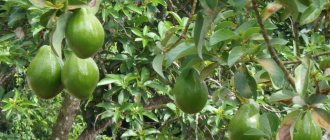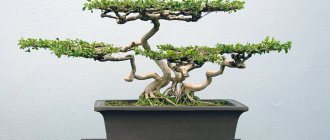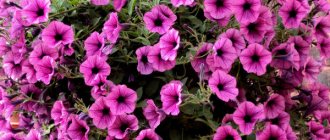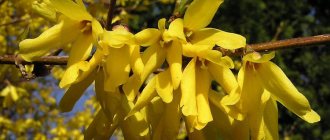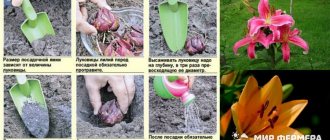Reading time: 6 minutes(s) The fig tree or fig, fig, wineberry is the most revered tree of the East. In many regions it is considered sacred and surrounded by legends. For Russian latitudes, figs are an exotic fruit. However, due to active imports, it can no longer be considered a curiosity.
It was not for nothing that the Romans believed in the healing properties of the fig fruit. It has long been known that it gives health, courage and strengthens fortitude.
Where and how does the fig tree grow?
The tree is of Western Asian origin and grows in the south of Crimea, in Azerbaijan. And also in the Caucasus and Transcaucasia. Also in the Carpathians, Krasnodar Territory, Rome, Australia, India, Central Asia and Iran.
For successful cultivation of fig trees, a mild climate is very important. Therefore, outside of natural conditions, figs are grown only in greenhouses. It is pruned to form a bush, and covered or buried in the winter.
In addition, fig cultivation is complicated by aganoids. These are very small insects. Which make their way into the fig tree through the hole during the flowering period and take over it. Then a queen and a swarm appear in it.
It should be noted that fig flowers are pollinated and begin to mature with the help of wasps. By the time the fig is ripe, harmful insects leave it and occupy the new fruit.
Thus, it is impossible to grow fig trees in the cold and in the open air. It is also difficult to breed them in botanical gardens. Therefore, breeders began to develop self-fertilizing varieties of fig trees. Today this trend is successfully developing. Moreover, special varieties of figs appeared in greenhouses and botanical gardens. And they are already able to withstand frosts down to -20 degrees.
Fig varieties
Figs are eaten all over the world and valued for their health benefits. Breeders are trying to develop more and more new varieties. The most common varieties of figs for production and trade are:
- Nikitsky. It has a spherical shape and light green skin with a pink side
- Dalmatian , also known as white Turkish. It has a thick skin and yellow-green color. The pink-brown flesh of syconium produces a pleasant aroma
- Kadota. It has a more flattened pear-shaped shape and brightly colored flesh;
- Sochi . Matte fruit with a light color, which belongs to frost-resistant varieties;
- Moisson Crimean. Figs are dark purple in color and pear-shaped.
- Honey. One of the sweetest varieties of figs;
- Verte or strawberry . Pear-shaped fruits are green in color with purple sides, which are distinguished by their very sweet taste;
- Brown Turkish. The most common option offered by supermarkets. Typically pear-shaped and brownish-purple in color.
Quite often the fig tree is confused with the sapwood. However, these are different types of trees of the same ficus family. Moreover, they have similar fruits. However, in sycamore they are endowed with a less pronounced taste and color. Many argue that the sycamore tree is the fig tree that was mentioned several times in the Bible.
Fig tree or fig
Figs, whether a tree or a shrub, belong to the genus Ficus, of the Mulberry family. In the wild, it is distributed in the Mediterranean countries, India, Georgia, Armenia, Iran, and Azerbaijan. Cultivated in the Krasnodar region and Crimea. The areas where this tree grows have a warm and humid climate. The plant does not tolerate cold temperatures less than -12 degrees. It can be grown at home.
Fig tree
The fruits of the fig plant have high taste, while their calorie content is low. The fruits of the fig tree are also a huge storehouse of vitamins and microelements, as well as organic substances: pectin, fiber.
Legends about figs
Figs are one of the oldest trees on our planet. All legends about the birth of Eastern wisdom contain mention of the fig tree. According to legend, enlightenment overtook the sage Buddha in the shade of this tree. And that is why the fig tree is also called the “tree of knowledge.”
Tree of knowledge and Buddha
As for Christianity, it was the fig that became the first tree mentioned in the Holy Scriptures. She is a symbol of fertility and obedience. Fig leaves served as clothing for Adam and Eve. In the New Testament, the tree fell into disgrace with the Son of God for lack of fruit.
In Egyptian legends, figs are identified with the sky goddesses Hathor, Yhet and Nut. According to legend, mothers of life preferred this product as food. In Egypt they also believed that the Sun was born from the fig tree in the morning.
According to legend, the founders of Rome, Romulus and Remus, owe their lives to the fig tree. A basket with babies was detained in a stormy river by the branches of this tree. That is why they did not die in the waters of the fast river. And only then the she-wolf found and nursed the children.
Growing in open ground
It’s hard to believe, but even in the gardens of the northern regions of Russia you can see figs. Growing it in these conditions is associated with certain difficulties. Figs are planted in the ground as ready-made seedlings (with roots). Cuttings are prepared at home, for which they are first placed in water with honey. It helps the formation of roots. It is most convenient to place cuttings in plastic bottles. Cut off about half of the empty bottle, fill it with soil and place the cutting there. The earth around it is being compacted. It should be damp all the time, but without excess water. Such improvised containers are placed on the windowsill, where there is no direct sunlight. The roots can be seen through the transparent plastic of the bottle or guessed about them by the blossoming leaves. When planted in the ground, the bottle is cut, and the lump of earth is preserved.
Seedlings should be planted only in sunny, windless places in specially prepared holes or trenches. Their depth is calculated as follows: the depth of soil freezing in your area + 50 cm. Drainage must be placed at the bottom of the hole. Figs sprout branches quickly. As they grow, they need to be tilted towards the ground and secured so that our fig tree does not grow upward, but rather spreads along the ground. When the air temperature drops to -3-5 degrees, the figs are covered. There are several ways (see photo).
One of the tested ones is this: throw twigs or other mulch on the figs (some throw a blanket), cover with polyethylene, and sprinkle a layer of earth on top. In the spring, when the temperature reaches above zero, the shelter is removed. You can do this earlier, when the days become warm and there are still frosts at night, but in such cases a greenhouse is installed over the figs.
Composition and nutritional properties of figs
Figs contain the daily requirement of silicon. This microelement is involved in the processes of collagen production in the body. The ancient Greeks and Romans considered the fruit of the fig tree to be a product of youth.
In addition, figs are very rich in other various substances. Per 100 grams of product there are:
| KBZHU | sugar (g) | fiber (g) | vitamin A (mg) | beta carotene (mg) | K (mg) | B9 (mg) | C (mg) | |
| fresh figs | 74/0,75/0,30/19,18 | 16,3 | 2,9 | 7 | 85 | 4,7 | 6 | 2 |
| dried figs | 249/3,3/0,93/63,9 | 47,9 | 9,8 | — | 6 | 15,6 | 9 | 1,2 |
In addition to fat- and water-soluble elements, figs contain a number of useful minerals:
| potassium (mg) | calcium (mg) | magnesium (mg) | phosphorus (mg) | sodium (mg) | iron (mg) | zinc (mg) | selenium (mg) | manganese (mg) | copper (mg) | |
| fresh figs | 232 | 35 | 17 | 14 | 1 | 0,4 | 0,2 | 0,2 | 0,1 | 0,1 |
| dried figs | 680 | 162 | 68 | 67 | 10 | 2 | 0,6 | 0,6 | 0,5 | 0,3 |
Fig tree fruits contain 18 essential and essential amino acids. Not to mention that among them there are also those necessary for the health of the muscular system and other tissues.
What are the benefits of figs for women?
Eating the fruits of the plant in question is beneficial for women:
- reducing the likelihood of developing varicose veins and the appearance of spider veins on the legs. Ficin, contained in fruits, strengthens veins and blood vessels, and also improves blood circulation;
- they contain folic acid. It is a valuable substance for bearing a child. The acid helps preserve the placenta and has a beneficial effect on the fetus. It also treats anemia;
- have a laxative effect. Therefore, it should be used for problems with bowel movements;
- in nursing mothers, consumption increases lactation;
- During menstruation, fig tree will reduce pain.
Benefits of figs
It is more beneficial for the body to eat fresh figs. However, if this is not possible, then you can use the dried version of the product. As stated above, the fruits of the fig tree have a very useful composition. Also, figs are the absolute leader in potassium and iron content.
In addition, the fruit has strong antioxidant properties. Figs have a positive effect on many things:
- Supports the cardiovascular system because it is rich in potassium and magnesium. These microelements help normalize blood pressure and strengthen the walls of blood vessels. In addition to potassium and magnesium, fig fruits contain ficin. This is a special enzyme that destroys blood clots and plaques in blood vessels;
- Increases the body's immune strength. Due to the content of beta-carotene, wine berries have an immunostimulating effect. Figs can be included in homemade immune-boosting treats. And take it on an ongoing basis during the off-season;
- Expectorant action. Eating figs is an additional measure in the treatment of cough and bronchitis. It has not only an expectorant, but also an antimicrobial effect. To enhance the effect of the fruit on the body, it is consumed with milk during illness;
- Stabilizes the functioning of the gastrointestinal tract. Siconia figs are high in fiber. This is what improves the functioning of the digestive tract. For the same reason, its use should be limited in case of disorders in the gastrointestinal tract;
- The condition of the skin, hair and nails improves. Because figs are rich in antioxidants. These substances slow down the process of cell oxidation, accelerate their regeneration and prolong youth;
- Cleansing the body. Decay products are removed from the body with the help of pectin;
- Uplifting mood. Thanks to a large amount of B vitamins, figs improve overall well-being and give strength;
- Reducing fever and temperature during a cold;
- Male reproductive system. Eating fig berries helps increase sexual libido and prevents prostatitis.
- Fig fruits contain large amounts of phosphorus. This microelement has a positive effect on the condition of the joints, and also stimulates the normal functioning of the kidneys and liver.
- Since ancient times, the Romans and Greeks used not only fig fruits, but also leaves. With the help of decoctions and infusions from them, they treated a wide range of skin diseases.
Life with figs
Plant care rules
The fig tree needs regular feeding. They are usually carried out twice a month.
How to plant a money tree at home
Feeding is carried out in the following sequence:
- nitrogen fertilizers are used at the beginning of the growth stage;
- followed by phosphate fertilizers;
- towards the end of the growth stage, use only potassium-based fertilizers;
- During the sleep stage, any fertilizers are excluded.
Attention! The plant can be fed only after abundant irrigation with water.
Watering
This plant needs frequent and abundant watering - at least 12 liters of water per week. The exception is the periods of harvest and dormancy of the tree. The amount of moisture is increased after the rooting stage or before fertilizing.
Trimming
Pruning is an important maintenance step. Not only the appearance, but also the yield of figs depends on it. Caring for and growing this plant in open ground differs from caring for a house plant. Pruning of branches is carried out exclusively in spring or late autumn.
In the first year of their existence, young plants are cut off almost completely, leaving one branch. It is better to choose the healthiest, straightest and strongest. The next year, the same branch is cut off at the level of the bud. This is necessary to form a beautiful tree shape. After another year, cut off all the branches sticking out. All these procedures are carried out in late autumn.
Important! In northern regions, it is recommended to prune only in spring, and in southern regions - both in spring and autumn.
Looking at a fig tree, it is difficult to understand whether it is a shrub or a tree. In fact, it is both a shrub and a tree and can be shaped in different ways.
Molding is carried out in two ways:
- for standard-shaped figs you will need 6-7 branches about half a meter long;
- for the bush form - a pair of short branches.
Limitations and harm
The most controversial issue is the harm of figs. The fact is that the fig tree fruit contains a high percentage of sugar. Sometimes this figure can exceed 70%. This content may be dangerous for people with diabetes. However, the special composition of figs inhibits sudden surges in blood sugar.
Fresh fruit has a glycemic index of 55. Dried delicacy - 65. This should be taken into account by people with health conditions. Fresh figs will give the body 49 kcal. When dried, the figure increases to 257 kcal. People who are trying to lose weight should limit their consumption of dried fruits.
Wine berries can cause an allergic reaction. Therefore, carefully introduce the fruit into the children's diet. And also limit its consumption during pregnancy and lactation.
Description of the fig plant: fruits, leaves and seeds
Fig is a subtropical fruit tree or large shrub 8-10 m high with a low, wide crown and thick branches. The bark of the trunk and branches is light gray and smooth.
The leaves are large, alternately arranged, 3-7 lobed, almost entire, hard, dark green above, grayish-green below, pubescent, up to 15 cm long, up to 12 cm wide. Attached to a thick, long petiole. In the axils of the leaves there are inflorescences - syconia, pear-shaped, hollow, with a small hole at the top. This hole is intended for blastophagous wasps, which pollinate the tree. Male inflorescences are called caprifigs, female inflorescences are called figs.
The fruits are sweet, juicy, pear-shaped, up to 8 cm long, up to 5 cm in radius, weighing 30-70 g. They contain small nut seeds inside. Fruit color, color and size depend on the variety. The most common are yellow, yellow-green, and dark blue figs.
During the growth period, the fig tree often blooms. However, male inflorescences are formed only from the beginning of spring to the end of autumn, and figs - only in summer and autumn.
You can see what figs look like in the photo in the gallery below, after this article.
How to eat figs
It is used for sweet and savory dishes. Figs are also actively used for serving dishes. There are no peculiarities in matters of use. It is enough to wash the fig and eat it whole with peel and seeds. This is the most ideal way to consume figs.
This way the human body will receive the maximum amount of benefit. However, the fruits quickly deteriorate and cannot be stored for long periods of time. Therefore, they are often dried and also canned in the form of snacks and jam.
Fresh figs and 9 best ways to prepare them
Combination with products
How figs are eaten depends on tradition and personal preference. We have prepared our recipes with figs for you. A common classic is to eat wineberries with cured ham. Figs are successfully combined in cooking with meat dishes. It is stuffed with minced meat and served with foie gras. A slice of fresh fig is often served with meat dishes.
Fig fruit is suitable not only for appetizers and main courses. It is used in recipes for fruit salads and other desserts. As a dessert, fresh figs can be served as a separate dish.
Fig tree fruits are combined with dairy products. They can be added to cottage cheese for breakfast. Or top slices of figs on cream cheese sandwiches.
What are the benefits of figs for men?
Men can consume the fruits of the plant in question to increase potency. Its effect on men's health is as follows:
- increased production of happiness hormones;
- prevents blockage of blood vessels;
- restores strength after sex;
- increases arousal.
Just as a general tonic, the fruits can be consumed in the following cases:
- fight against anemia;
- strengthening teeth and bones;
- restoration of strength;
- diuretic effect, etc.
Recipes
Strudel with figs
Homemade strudel with figs
The strudel is amazingly good, melts in your mouth and makes a great addition to your morning coffee.
Sauce for fig meat
Sauce for fig meat
The sweet notes of figs perfectly highlight the taste of baked duck. The standard recipe uses apples, which can be effectively replaced with our sauce
How to select and store figs
The vast majority of figs on our shelves are imported. During transportation, fruits may be damaged and spoiled. Therefore, when choosing figs, you need to be careful. You should not buy syconium with scratched or damaged skin. This will speed up the oxidation and fermentation process.
With prolonged and improper storage, figs begin to deteriorate from the inside without visible marks on the outside. To recognize this, just inhale the aroma of figs. A sour smell will come from the hole at the top of the fruit.
It is better to store dried and ripe figs in refrigerators. The fruit has a high sugar content, which at room temperature provokes fermentation. Ripe figs cannot be stored for longer than 5 days. The dried version can be stored in the cold for up to six months.
What are the benefits of dried figs?
Fresh figs cannot be stored for more than three days, so dried fruits are most often made from them. But even in dried form it contains a huge number of useful components.
Important! 100 g of dried fruit contains the daily requirement of vitamin B.
The dried product is used in the following cases:
- when blood pressure is high;
- to make bones stronger;
- for colds;
- for the prevention of cancer.



